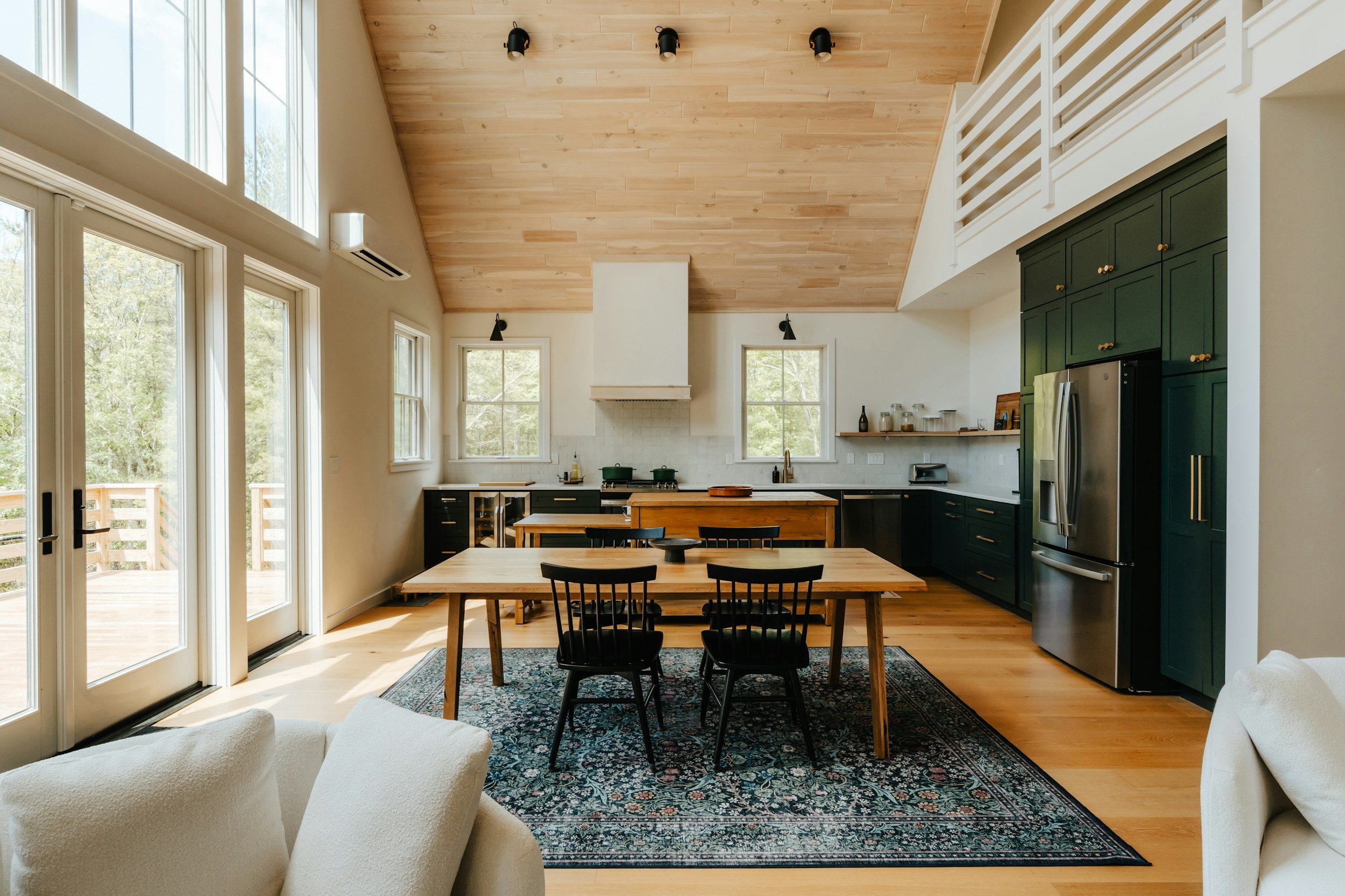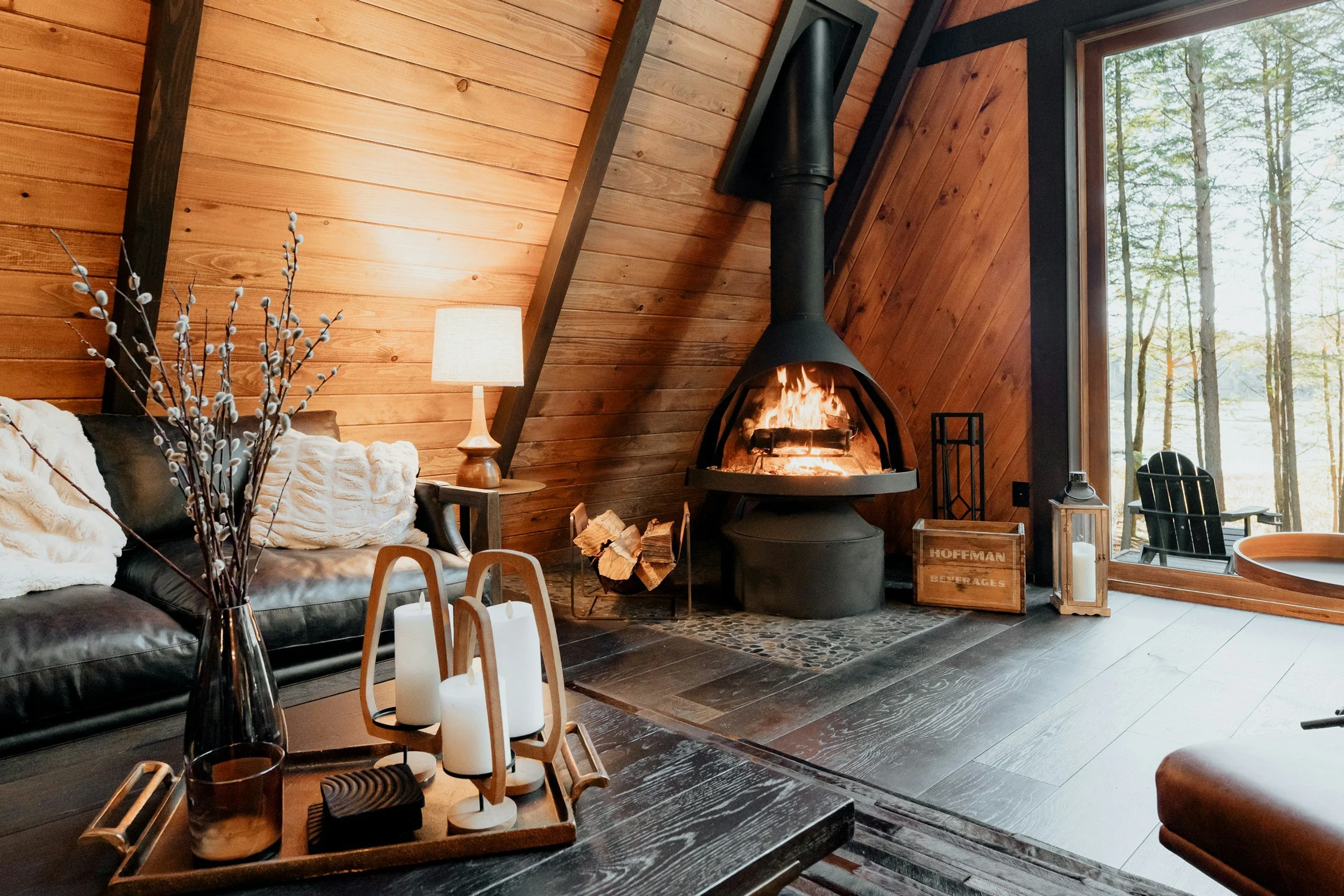Creating a Guest-Centric Rental: Hospitality Design Essentials
When it comes to vacation rentals, the goal is simple: create a space that feels welcoming, comfortable, and functional for guests. But achieving that isn’t always as straightforward as it seems. What makes a rental truly stand out and keep guests coming back for more? It’s all about creating a guest-centric design.
A guest-centric design is a root of hospitality and puts the needs, comfort, and convenience of the guest experience first while balancing durability, style, and functionality. In this post, we’ll break down the key elements that make up a guest-centric design, discuss essential furniture and features every vacation rental needs, and share tips on how to create a space that works for different types of guests. Plus, we’ve got a helpful checklist to evaluate your rental’s setup.
What Does "Guest-Centric Design" Really Mean?
When we talk about guest-centric design, we’re referring to a design that focuses on the needs of the people who will be staying in the space. It's more than just filling a room with furniture and décor—it’s about ensuring that the space works for guests, whether it’s providing comfort, convenience, or creating a visually pleasing environment.
Here are a few key elements of guest-centric design:
Durability: Your furniture and decor need to stand up to the wear and tear that comes with frequent use. It’s important to choose materials and pieces that are both beautiful and built to last.
Comfort: The space should feel cozy and inviting, making it easy for guests to relax after a long day of sightseeing or business meetings. Comfort plays a significant role in guest satisfaction.
Aesthetics: While function and durability are critical, aesthetics also matter. A well-designed space can elevate the guest experience, setting the tone for a memorable stay.
By focusing on these aspects, you create a space that serves guests well and leaves them feeling at home.
Essential Furniture and Features for a Guest-Centric Design
When designing your vacation rental, there are a few essential furniture and features you need to include to ensure comfort and functionality. Here’s a breakdown of what every vacation rental should have:
1. Cozy Seating
Comfortable seating is one of the first things guests will notice. Whether they’re winding down after a long day or gathering to chat with family or friends, having cozy seating is a must. Think plush sofas and armchairs that invite guests to settle in. If the space is smaller, a sectional can help maximize seating without making the room feel cramped. Add some throw pillows for extra comfort and style.
2. Quality Beds
A good night’s sleep is essential, so investing in high-quality mattresses, pillows, and linens is a must. Comfortable beds ensure guests wake up refreshed and ready to enjoy their day. In addition to mattresses, consider the overall bedding aesthetic—think crisp, clean sheets, cozy blankets, and attractive duvets that make the space feel inviting.
3. Durable Fabrics
Because vacation rentals experience high turnover, you need durable fabrics that can withstand heavy use and still look good. Look for performance fabrics that resist stains and are easy to clean. Fabrics like cotton blends, polyester, and microfiber are great options for upholstery and pillows. When choosing fabrics, also consider how they hold up to sun exposure, as fading can be a concern in homes with lots of natural light.
4. Flexible Dining and Work Areas
Depending on the type of guests you attract, you might want to provide a versatile dining area. A dining table with enough seating for the maximum number of guests is a must, but it’s also helpful to have additional seating or surfaces for work or entertainment. A small desk or writing table can be handy for business travelers or families who need a space to plan their day.
5. Functional Storage
Effective storage is key to keeping a space organized and comfortable. Offer plenty of closet space, shelving, and drawers so guests can stow their belongings. Consider providing luggage racks or hooks near the door for coats, bags, and hats. In smaller rentals, built-in storage options such as under-bed storage or ottomans that double as storage can be a game-changer.
6. Good Lighting
The right lighting can make all the difference in setting the mood of a space. Aim for a mix of ambient lighting, task lighting, and accent lighting. Use bedside lamps for reading, overhead lights for general illumination, and soft accent lights for ambiance. Lighting should be adjustable to accommodate different activities, whether guests are cooking, working, or relaxing.
Clear Layouts and Intuitive Spaces for Guests
A clear layout is one of the most crucial aspects of guest-centric design. When guests enter your rental, they should immediately know how to navigate the space without feeling disoriented or overwhelmed. An intuitive design means guests can easily access what they need—without having to ask where things are or shuffle through too much furniture.
Here are some tips for creating clear and intuitive layouts:
Open Floor Plans: Open-concept living spaces allow for easy flow and make smaller areas feel more spacious. If you’re working with a tight space, opt for a layout that keeps furniture minimal and doesn’t overcrowd the room.
Zoning: Even in an open space, make sure different areas serve specific functions. For instance, designate an area for dining, one for relaxing, and one for working (if needed). You can use rugs, lighting, or furniture placement to define each zone.
Easy Navigation: Consider the pathways guests will take when they enter and move through the space. Avoid blocking doorways, windows, or access to essential areas like the bathroom or kitchen. A clear, logical flow helps make the space feel inviting and functional.
Accommodating Different Guest Types: Tips for Families, Couples, and Solo Travelers
Different types of guests will have different needs, and it's important to design with all of them in mind. Whether you're catering to families, couples, or solo travelers, making adjustments based on the types of guests you want to attract can improve the guest experience.
1. For Families
Families need plenty of space for everyone to relax and do their activities. In addition to multiple bedrooms, you should provide:
Kid-friendly furniture: Consider having softer, durable fabrics and sturdy, easy-to-clean pieces.
Multiple beds or a large bed: If your rental has only one bedroom, consider a setup with a queen-sized bed plus a sleeper sofa or bunk beds.
Safety features: For younger children, ensure that furniture is secure, and consider baby gates or safety locks for stairs or cabinets.
Entertainment: Families love having options for downtime, so provide board games, books, or a TV with kid-friendly channels.
2. For Couples
Couples often look for a romantic getaway or a place to relax and unwind. In this case, focus on:
A cozy, comfortable bed: Make sure the bed is inviting with luxurious linens, soft pillows, and a welcoming aesthetic.
Atmosphere: Focus on creating an ambiance that encourages relaxation, such as soft lighting, romantic décor, and comfortable seating for two.
Privacy: If your space is shared with others (such as in a shared home or duplex), consider adding privacy elements like curtains or partitions.
3. For Solo Travelers
Solo travelers may be looking for a peaceful, quiet retreat or a base for exploring the area. For these guests, consider:
Compact, functional spaces: Solo travelers tend to prioritize functionality, so they’ll appreciate a well-designed, uncluttered space where everything has a place.
Work or reading nook: If your rental attracts business travelers or digital nomads, a small desk with a comfortable chair and good lighting is essential.
Safety and accessibility: Ensure the space feels secure and is easy to navigate, especially for solo guests who may appreciate a stress-free experience.
Guest-Centric Design Checklist
Not sure where to start when evaluating your vacation rental’s current setup? Use this checklist to assess your space:
Durability: Are your furniture pieces durable and built to last? Are fabrics easy to clean and resistant to wear?
Comfort: Do your seating and beds provide the necessary comfort for guests to unwind and relax?
Aesthetics: Does the space have a cohesive design that feels inviting and visually appealing?
Layout: Is the flow of the space clear, with easy navigation between areas?
Storage: Does the space offer sufficient storage for guests to keep their belongings organized?
Lighting: Is the lighting flexible and adjustable to suit different needs?
Guest Needs: Have you considered the needs of different types of guests (families, couples, solo travelers)?
Conclusion
By focusing on guest-centric design, you create a space that goes beyond just looking good—it works well for your guests, keeps them comfortable, and enhances their experience. Whether you’re designing for families, couples, or solo travelers, keeping comfort, durability, and functionality at the forefront will ensure your vacation rental stands out.
Want to make sure your space is designed for maximum guest satisfaction? Let’s chat! Together, we can create a guest-centric design that keeps your rental in high demand.
If you are looking to transform your space or just want to say hi, I'd love to connect! Reach out here!
READ MORE
FOLLOW ON INSTAGRAM
BY SARAH BRONSTEIN




























